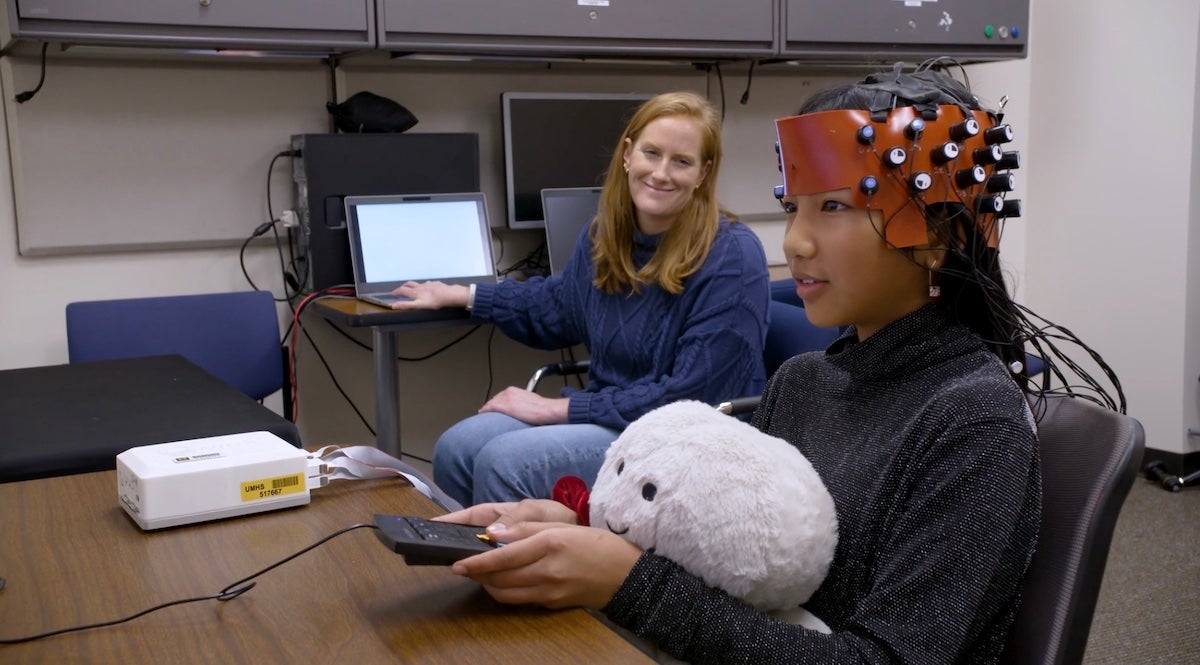Reading challenges
Reading is critical for success in today’s society. Unfortunately, 5-15% of all children in the US grow up with dyslexia, a learning disability that makes it difficult to learn to read. This impairment affects children learning to read in one language, as well as bilingual children.
Why our research is important
Our goal is to understand the brain mechanisms behind language and literacy development, and how these mechanisms differ across learners. We are interested in understanding how all children learn to read: monolingual children, bilingual children, and children with learning differences, such as dyslexia or language impairment. Our research aids in understanding why some children learn language with no difficulties, while others face obstacles.
Your participation will help educators, researchers, and scientists understand how children develop important language and reading skills. In addition, it helps us improve methods to diagnose language difficulties.
How we study brain development
Our studies use assessments and games to help us understand your child’s language and reading development. These games measure skills like vocabulary, grammar, and reading comprehension. We also use fNIRS (functional near infrared functional spectroscopy), a child-friendly neuroimaging method that helps us see how the brain works. Children play fun computer games that ask them to think about sounds, words, and sentences, and we use fNIRS to measure their brain activity while they play.
What will my child do?
When you first come in, we will take some time to talk to your family, show you around, and make sure your child is excited to participate! Then we will play some English games to assess your child’s language and reading skills. If your child also speaks either Spanish or Mandarin, we will play the games in both of their languages. We will also teach your child some easy computer games, and measure their brain activity using fNIRS neuroimaging. While your child is participating, we may also ask you to complete a survey. At the end of your visit, your child will receive a prize, and your family will be compensated for your time. Each session takes between 2-4 hours, with plenty of breaks for snacks.

What is fNIRS? How does it work?
When your child thinks, neural activity increases and oxygen flows into the blood, making it a brighter red. We use light to measure the changing color of the blood and your child’s brain activity.
More specifically, we use fNIRS light to examine brain function. When we think, increased neural activity results in increased volume of oxygenated blood flowing to certain regions of the brain. fNIRS shines light into the brain to measure the amount of blood, the change in oxygenation, and where it is flowing. fNIRS is safe for infants, children, and adults. Our laboratory successfully uses this method to study child bilingualism, attention, and math.
